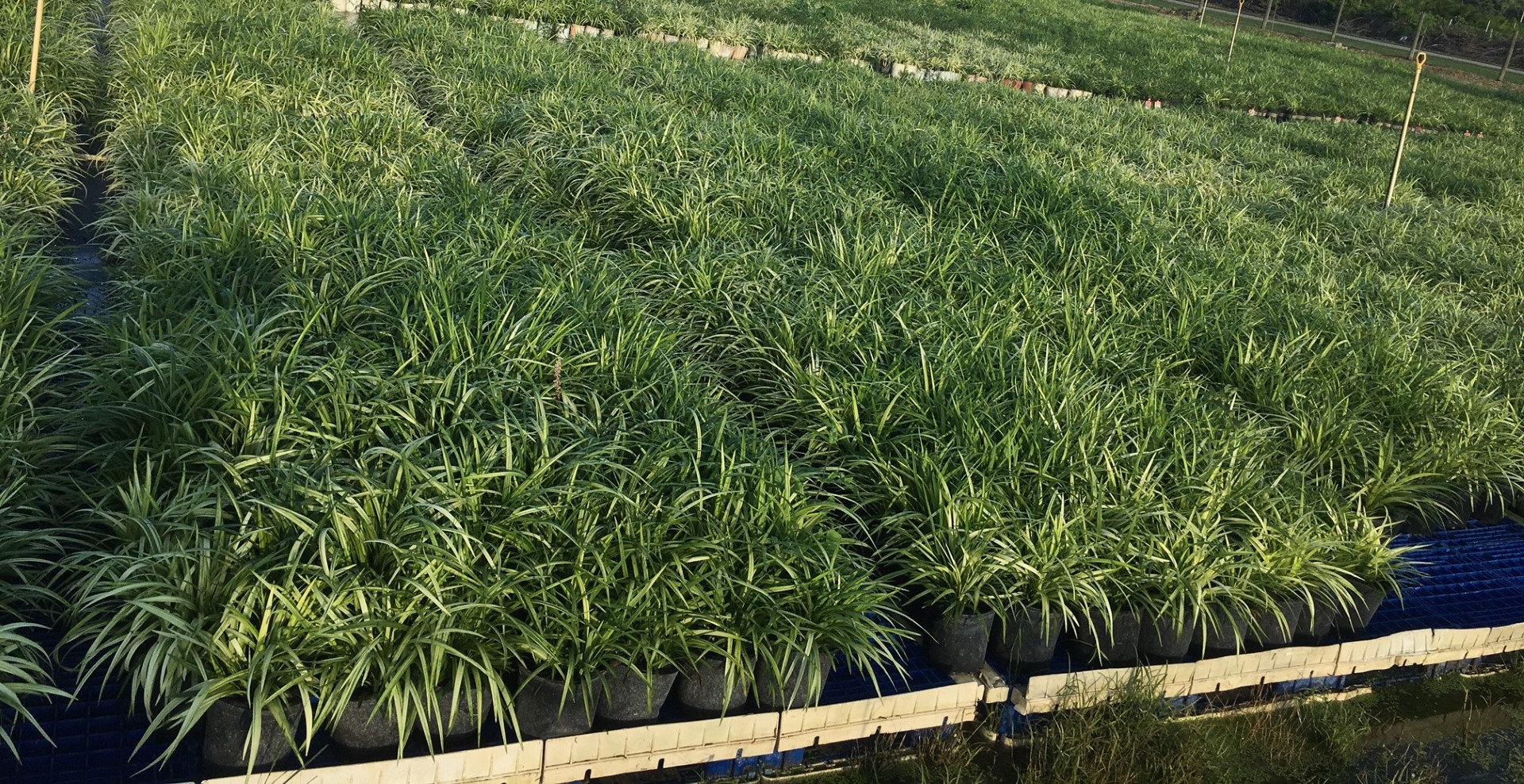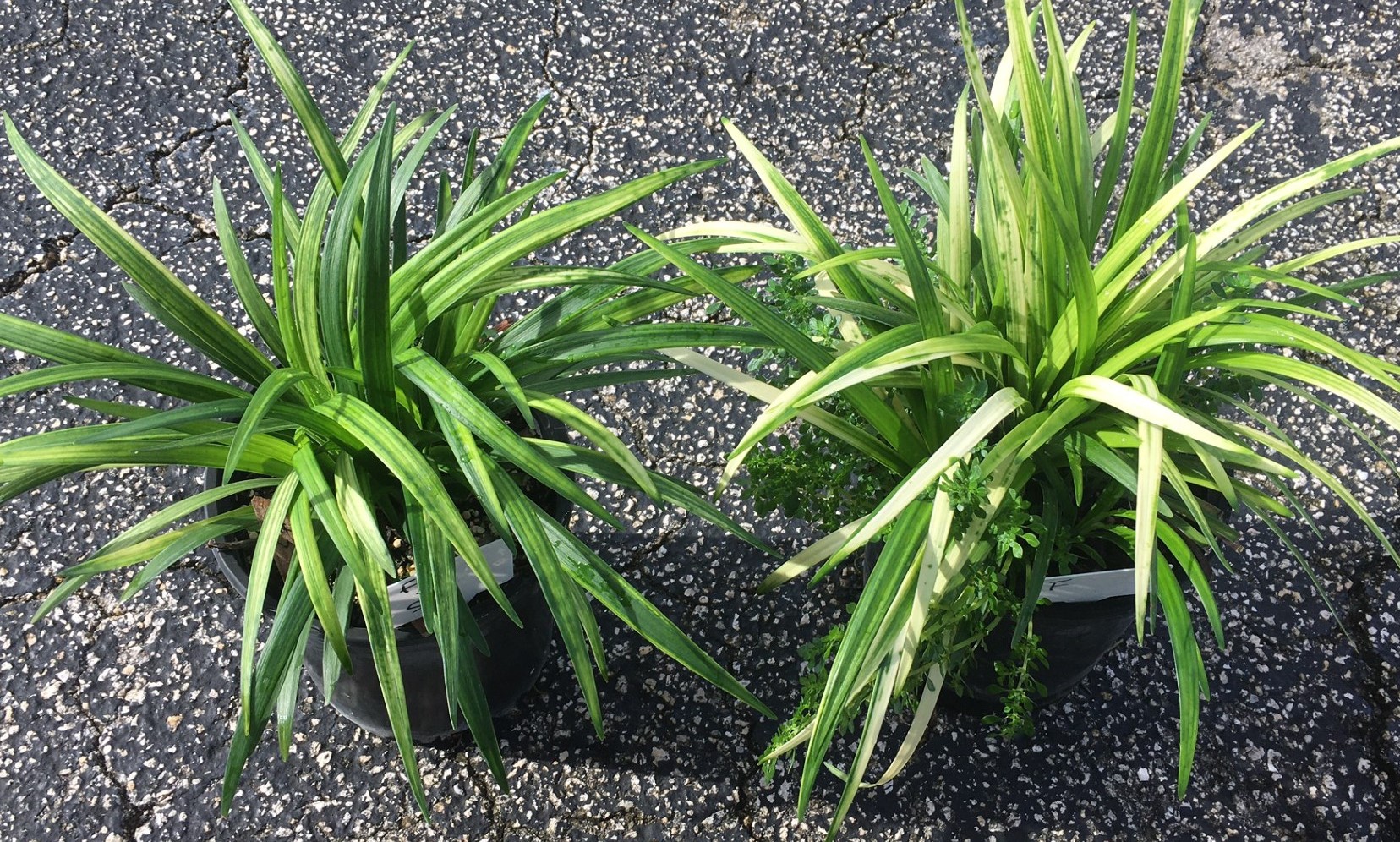In May, a grower brought liriope plants with yellowing leaves to the extension office for assistance after the plant clinic ruled out pathogen infection. Upon visiting the farm, I observed that 70-80% of the plants transplanted in January were severe yellowing. It was challenging to determine the origin of the problem. In nearby pots planted in February, the new growth was also beginning to show yellowing symptoms.
After testing soil pH and EC (indicator for nutrient) levels, the results revealed pH ranged from 7.5 to 7.9 (the normal range is 6–7), and EC ranged from 0.64 to 0.78 dS/m (preferred above 0.8 for container media). Suspecting nutrient deficiencies due to the elevated pH, I consulted the specialists at the University of Florida and sent leaf samples to the soil test lab for nutrient analysis. The results showed that, of all the nutrients, only iron levels varied dramatically, ranging from 101.8 to 288.9 ppm. Given the yellowing of new growth and the lab results, it was clear that iron deficiencies was the root cause, despite the grower’s claim of weekly iron sprays.
To address the issue, I treated some plants brought back to the extension office by drenching the soil or spraying the plants with chelated iron according to the recommended rate. After three weekly treatments, the yellowing had completely disappeared in plants drenched with iron, while the yellowing symptom significantly improved to a green color in plants sprayed.
Plants were drenched twice ( top left) and sprayed 3 times with iron (top right) (as shown on 6/14/2024)
I demonstrated the results to the grower, who was convinced that iron supplementation was the solution to his yellowing grass. It is likely that the grower had not been applying enough iron. Consequently, the symptoms in the field worsened before eventually improving in late July, with full recovery by early September after the iron application rate was increased.
Plants in the farm on 6/14/2024 Plants in the farm on 7/23/2024

 Plants in the farm on 9/9/2024
Plants in the farm on 9/9/2024
In retrospect, the grower might have avoided much of the yellowing if he had sought help from the extension office earlier when the symptoms first appeared. Once the cause was identified, adding more iron to each pot could have corrected the issue sooner. It’s important to note that the extension office provides free services to growers, including farm visits, and we are always just a phone call away.
This case highlights the collaborative effort in solving real-world crop production problems. I want to extend my gratitude to the specialists at the University of Florida, Dr. Yuncong Li and Dr. Jianjun Chen, for their valuable advice and to the biological scientist Guiqin Yu for her technical assistance in lab tests.
 1
1




